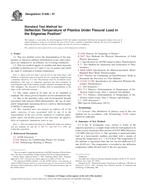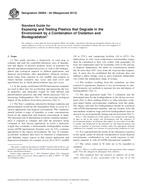We need your consent to use the individual data so that you can see information about your interests, among other things. Click "OK" to give your consent.
ASTM E2050-12a
Standard Test Method for Determination of Total Carbon in Mold Powders by Combustion (Includes all amendments And changes 6/20/2017).
Automatically translated name:
Standard Test Method for Determination of Total Carbon in Mold Powders by Combustion
STANDARD published on 1.6.2012
The information about the standard:
Designation standards: ASTM E2050-12a
Note: WITHDRAWN
Publication date standards: 1.6.2012
SKU: NS-44112
The number of pages: 4
Approximate weight : 12 g (0.03 lbs)
Country: American technical standard
Category: Technical standards ASTM
The category - similar standards:
Annotation of standard text ASTM E2050-12a :
Keywords:
carbon, combustion, infrared absorption spectrometry, mold powders, ICS Number Code 83.080.01 (Plastics in general)
Additional information
| Significance and Use | ||||||||||||||
|
This test method for the determination of total carbon in mold powders is primarily intended to test such materials for compliance with compositional specifications. It is assumed that all who use this test method will be trained analysts capable of performing common laboratory procedures skillfully and safely. It is expected that the work will be performed in a properly equipped laboratory and that proper waste disposal procedures will be followed. Appropriate quality control practices must be followed such as those described in Guide E882. |
||||||||||||||
| 1. Scope | ||||||||||||||
|
1.1 This test method covers the determination of total carbon in mold powders in the concentration range from 1 % to 25 %. Note 1—As used in this test method, “percentage” or “%” refers to a mass fraction of the form (wt / wt %) (g/100g). 1.2 The values stated in SI units are to be regarded as standard. No other units of measurement are included in this standard. 1.3 This test method has been evaluated in accordance with Practice E1601 and Guide E1763. Unless otherwise noted in the precision and bias section, the lower limit in the scope of each method specifies the lowest analyte content that may be analyzed with acceptable error (defined as a nominal 5 % risk of obtaining a 50 % or larger relative difference in results on the same test sample in two laboratories). 1.4 This standard does not purport to address all of the safety concerns, if any, associated with its use. It is the responsibility of the user of this standard to establish appropriate safety and health practices and determine the applicability of regulatory limitations prior to use. |
||||||||||||||
| 2. Referenced Documents | ||||||||||||||
|
Similar standards:
Historical
1.4.2011
Historical
15.5.2012
Historical
1.3.2007
Historical
1.9.2011
Historical
1.4.2010
Historical
1.1.2013
We recommend:
Technical standards updating
Do you want to make sure you use only the valid technical standards?
We can offer you a solution which will provide you a monthly overview concerning the updating of standards which you use.
Would you like to know more? Look at this page.



 ASTM D6395-11
ASTM D6395-11 ASTM D6400-12
ASTM D6400-12 ASTM D648-07
ASTM D648-07 ASTM D6869-03(2011)..
ASTM D6869-03(2011).. ASTM D695-10
ASTM D695-10 ASTM D6954-04(2013)..
ASTM D6954-04(2013)..
 Cookies
Cookies
